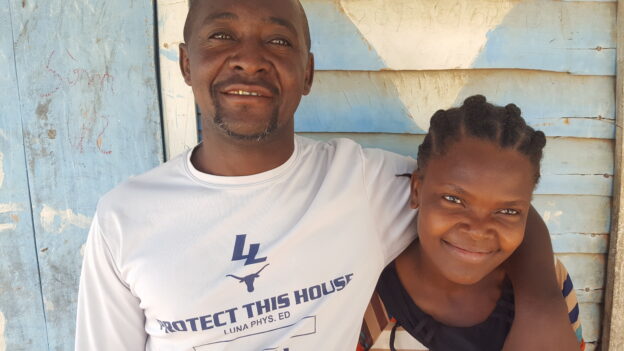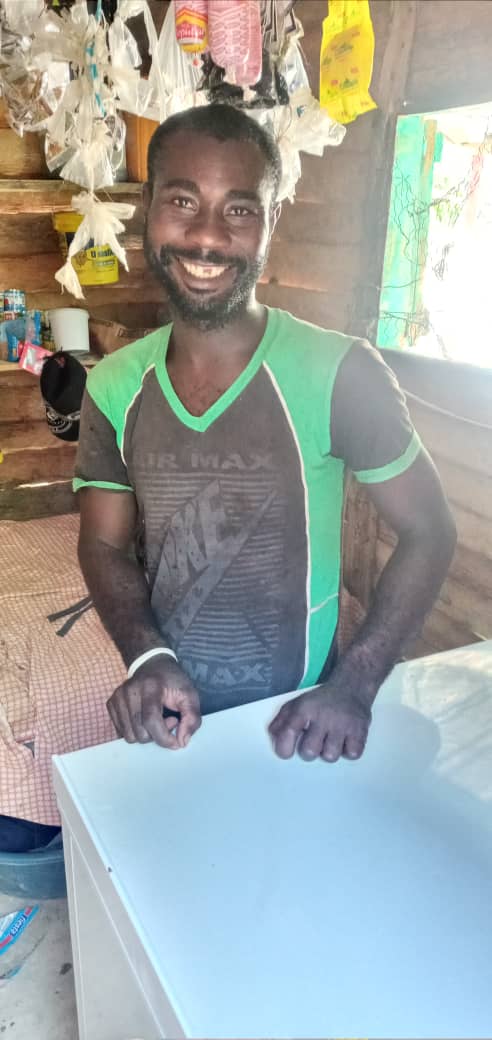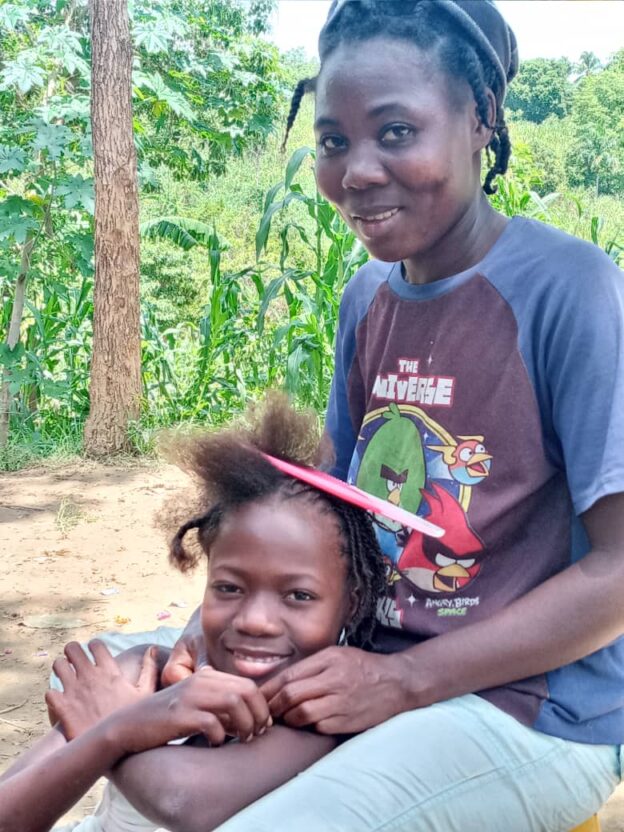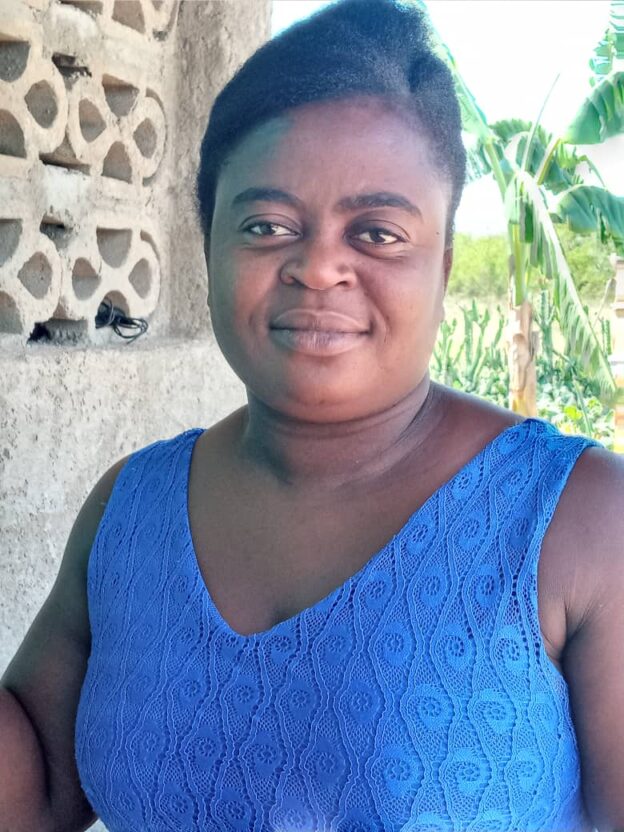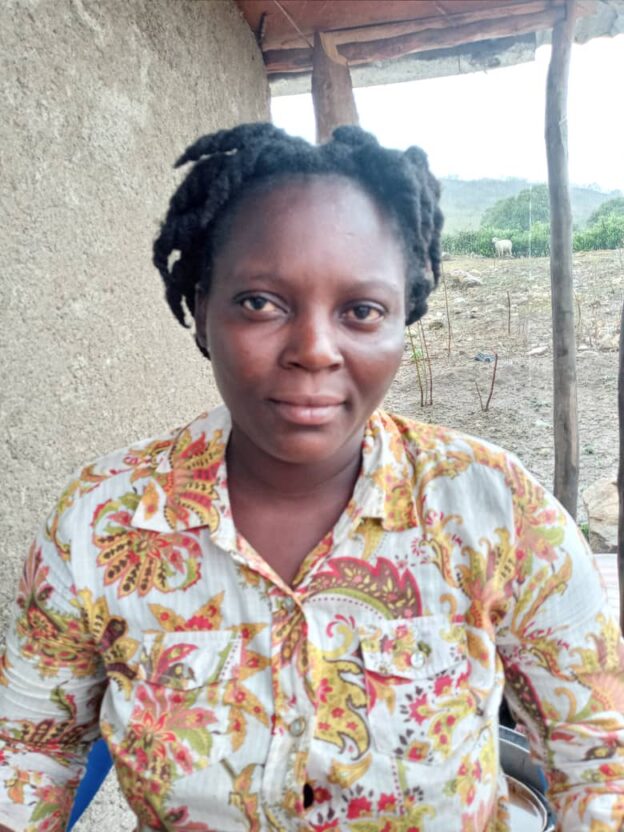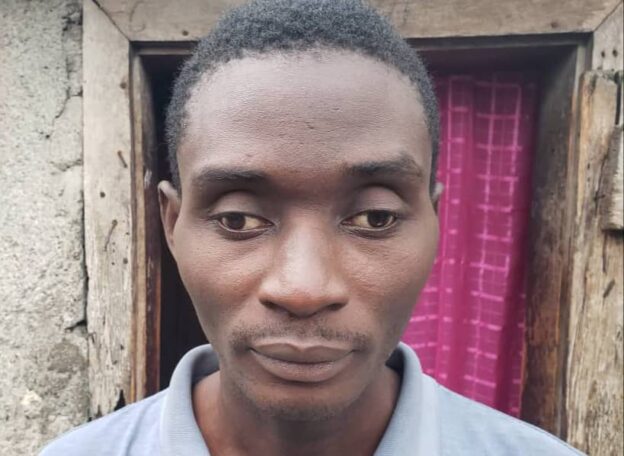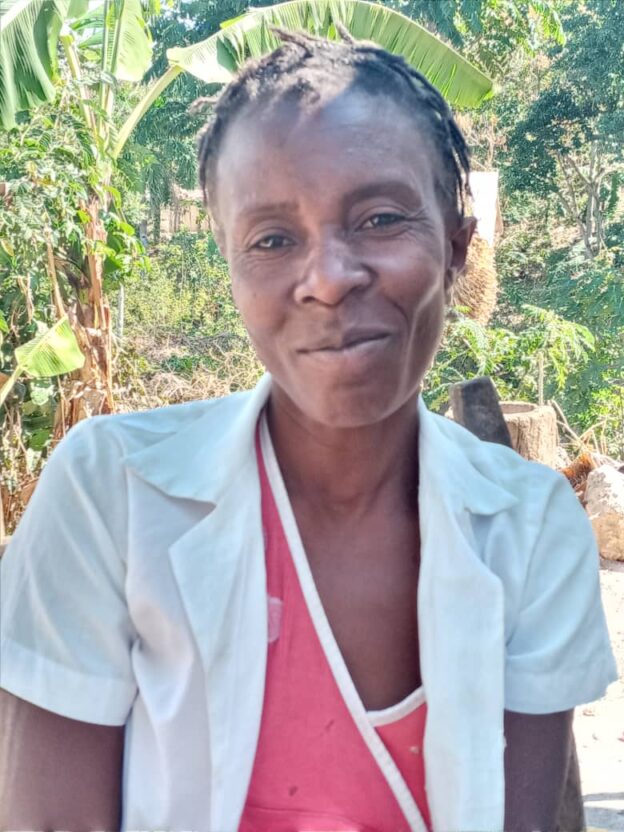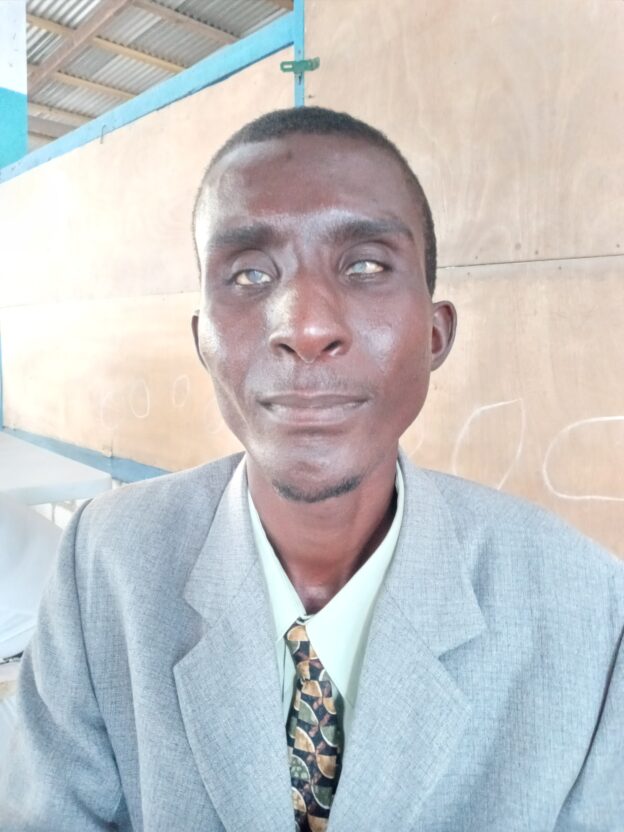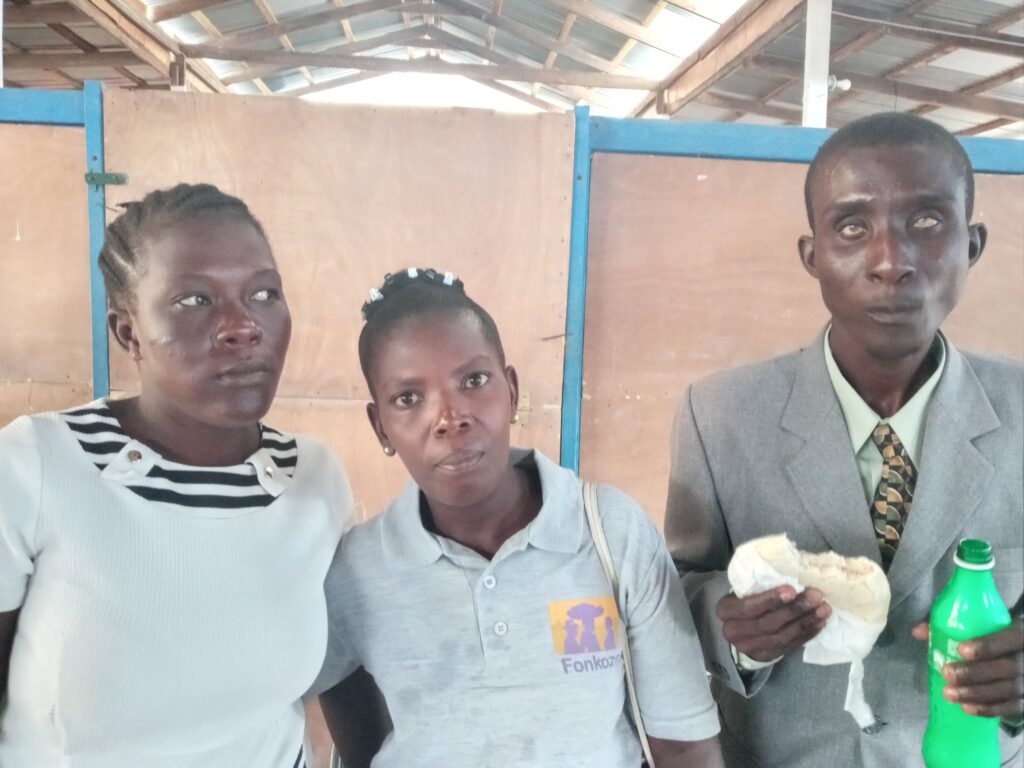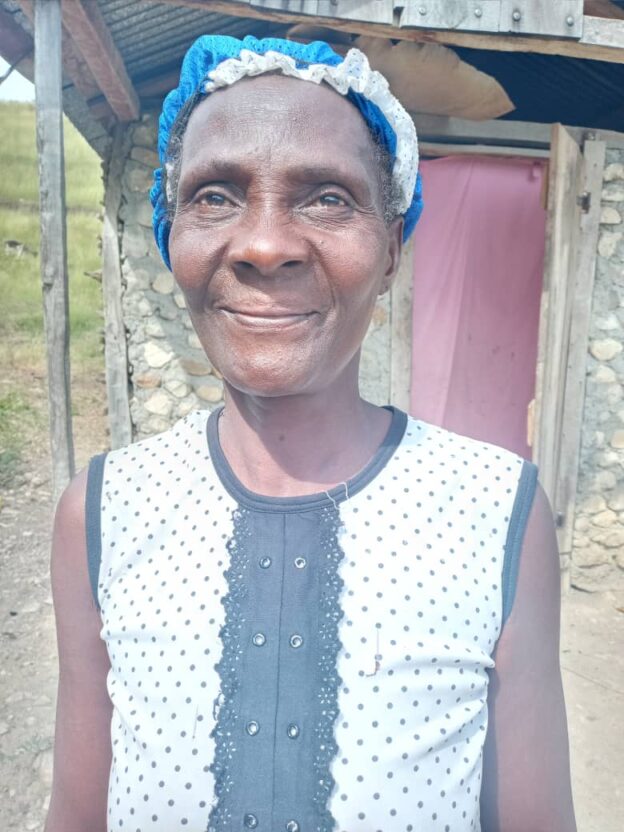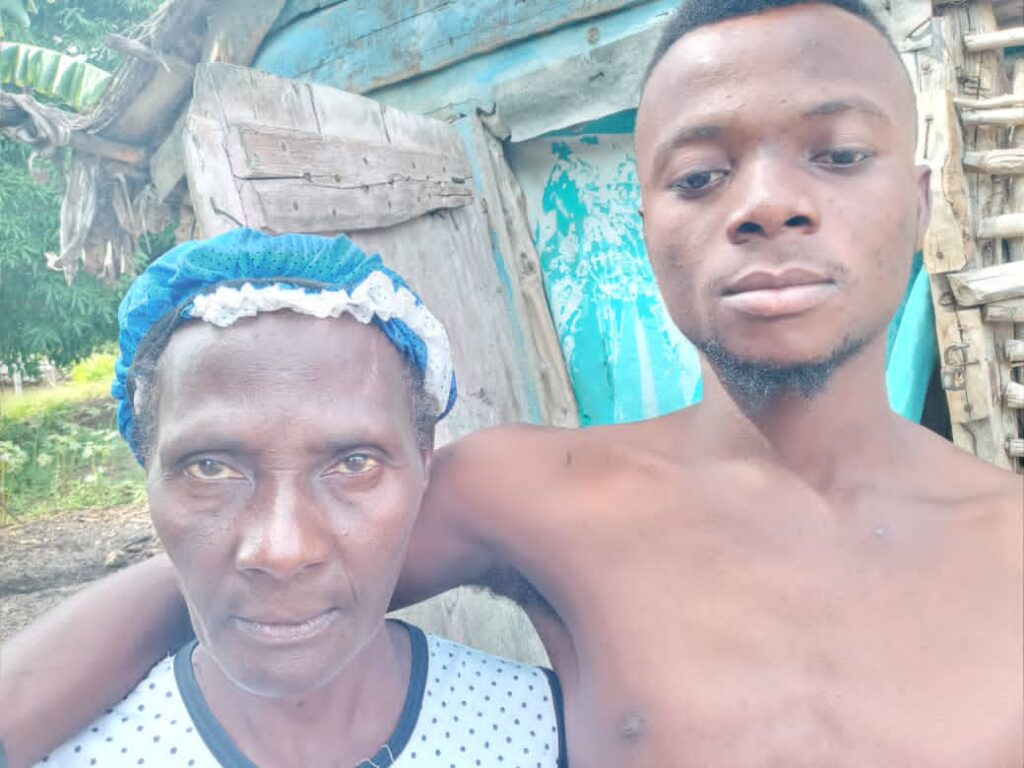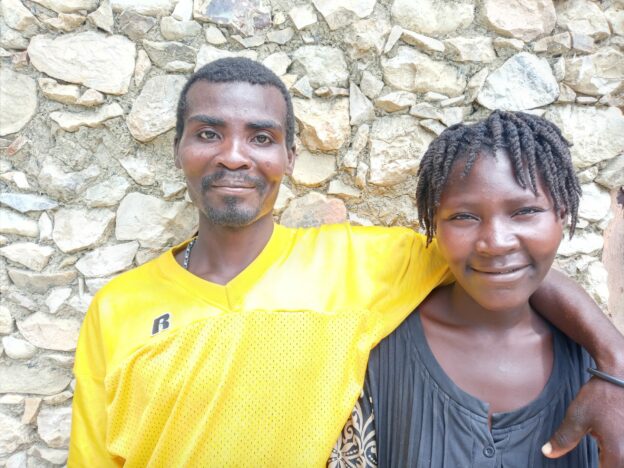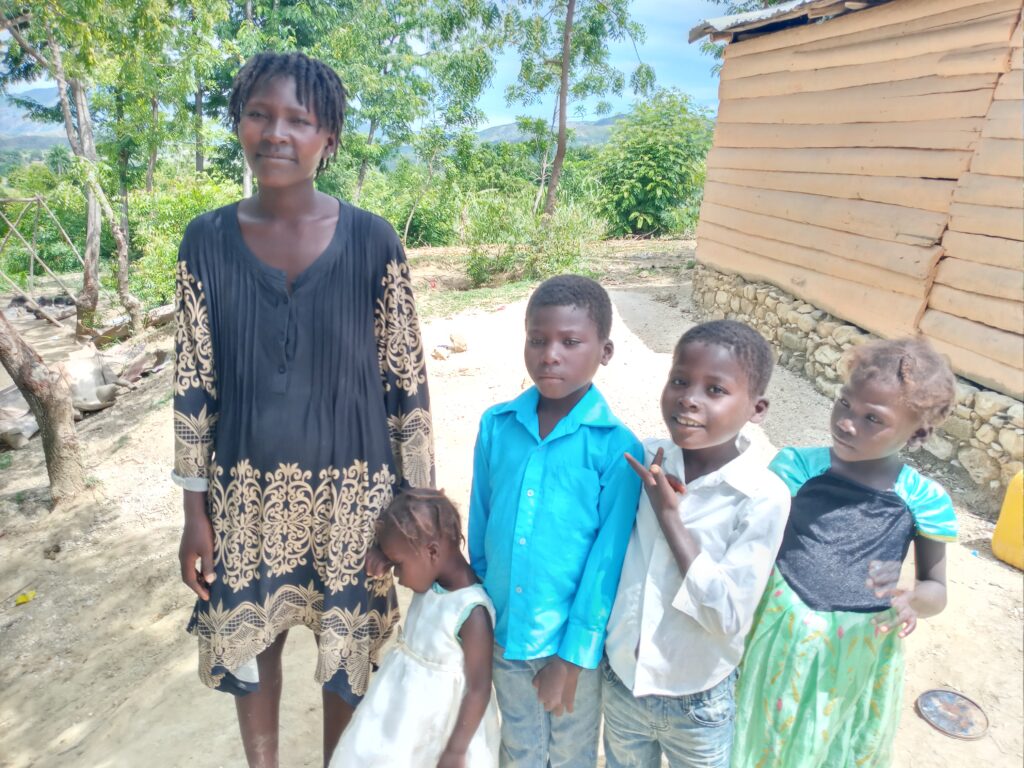Dieula and her husband Mathurin live with their three children in Wodo, a small, very rural area in southeast Tomond. It sits well down a long dirt road that runs eastward from the main national route through the middle of the Central Plateau.
Before 2019, the couple was relatively prosperous. Dieula stayed at home, managing the household. Mathurin was a farmer, but his and the family’s main source of income was lumber. He prepared and sold wood, mostly for furniture. He would buy trees, and then hire an assistant to help him fell them and then cut them into planks. Then he’d sell the planks either at the large market in Ench or in Potoprens. “If CLM had come through the neighborhood back then,” he explains, “they wouldn’t even have spoken to us. They’d have walked by our house. We didn’t need them.”
Disaster stuck one day in May 2019 when he was setting up a large tree to be cut into planks. Haitian lumberjacks work in pairs, using a long saw with a handle at each end to slice trees’ trunks. They lift the log onto a frame they erect onsite. Then one man stands on the log, and the other stands below it as they saw. Mathurin’s frame collapsed, and the log fell on him, badly breaking his leg.
There is no good time for such a horrible accident, but the timing for this one could hardly have been worse. The big hospitals in the Central Plateau, the ones who might have been able to help Mathurin, depend for their medical staff on Pòtoprens. They commute from the capital on Mondays and return on Fridays. But the socio-political upheaval in Haiti meant that their trips to their places of work were uncertain. Roadblocks might interfere at any time. So the staffing for hospitals was uncertain as well. Mathurin was afraid that he would get to a hospital without its best doctors, and they’d just want to amputate.
So he joined his younger brother, who lives in the Dominican Republic, and went to a hospital there. He received care, but it was expensive. He sold his saw, the couple’s livestock, and finally their farmland. They sold everything of value except the small parcel of land their house was built on to pay his medical costs.
The leg was set with screws, but something went wrong, and it would not heal. Months went by, and Mathurin was still unable to walk, or to put even a small weight on his foot. He was in constant pain.
His income, of course, disappeared. Dieula managed to borrow a little money from a friend and start a small business. She carried groceries to nearby markets on her head, and sold as best she could. But when the CLM selection team passed through their neighborhood in late 2019, the family was really struggling.
When they joined the program, they chose goats and peanut-farming as their two enterprises. With no farmland left of their own, they had to find a plot to rent, but they managed to do so with savings from their cash stipend. Their garden prospered, as did their collection of goats. They now have nine, even though they have sold some of them to get their kids back into school.
Dieula also used savings from her cash stipend to invest in her business. Careful management has increased its value to about 7500 gourds, or about $75, even though she uses most of what she makes to feed her family and she also uses its revenue to buy shares each week at her Village Savings and Loan Association.
At the end of the association’s first one-year cycle, she used the payout to pay debts. She had been feeding her family by buying on credit from local merchants. She needed credit because her business was not big enough to feed the whole household. But she wasn’t able to repay the merchants who trusted her. She hopes to use the next payout to add to her livestock.
So the family was turning things around, but they were still limited because Mathurin wasn’t contributing at all. “My wife really does everything.” The team realized it needed to see whether it could help Mathurin with his leg, so it took him to see an orthopedist at the public hospital in Ench. The doctor was sorry to say that he couldn’t help. He could see Mathurin’s problem in the x-ray. The broken bones weren’t healing correctly. He suspected that another surgery would be necessary to reset the leg, but he explained that the type of screws that had had been used to set the leg were not the kind used at Haitian hospitals. He had no access to the special tool it would take to remove them. He said that Mathurin would need to go back to the DR.
This would be complicated. Though Dieula was building up her earnings, she didn’t have enough to pay for the care that Mathurin needed. The CLM program ensures its members and their families access to free medical care while they are in the program, but generally depends on Partners in Health. an important international organization the works closely with the Haitian ministry of health to provide it. There has been a three-way agreement between the ministry, PIH, and Fonkoze for over a decade. Because Mathurin needed to return to the DR, PIH’s free services would be unavailable.
That’s where the CLM emergency fund comes in. It is a small amount of money that the program sets aside for each family, design to protect them against the de-capitalization of their new wealth while they are in the program. Most often, it is used to help offset funeral expenses. We don’t want a sudden expense to wipe out the first steps of progress that CLM families make. The fund is less than $50 per family, but since most families don’t need it at all, it can usually cover even large expenses for the few families who need it to. Mathurin’s care would cost well over a thousand dollars. There is no way that he and Dieula could have paid for it, but the CLM program had the funds they needed.
But the couple had another problem. Graduation was scheduled for August, and by then Mathurin still had not been able to complete his treatment. A range of problems, including especially complication connected to gas shortages, political unrest, and COVID 19, delayed things. In addition, the treatment itself turned out to need time. Rather than another operation, the Dominican doctor treatment with medication over a series of weeks and months before deciding whether a new operation was even necessary.
Normally, work for a cohort of CLM families closes with graduation. Fonkoze completes expenses and sends a final financial report to its funding partner. But Opportunity International, the partner funding Dieula’s cohort, was happy to extend the deadline for expenses related to the cohort, so all Fonkoze needed to do was free Dieula’s case manager to continue to give the couple a small amount of guidance and get the funds they would need into Mathurin’s hands.
Thanks to Opportunity International’s flexibility and to the persistence of Dieula’s case manager, Manno, Mathurin did get the care he needed. His doctor decided against an operation. He was able to manipulate the leg by strapping Mathurin in place as he pulled and twisted.
As bad as that all might sound, the results have been encouraging. Mathurin now walks pain-free. He’s not ready to walk very far or to work the leg hard, but he’s happy with the progress he’s made. “I can walk again.” He is afraid to go back into the lumber business, but he already has another idea. Once he is strong enough for longer hikes, he plans to return to the market, this time as a livestock merchant.
He and Dieula are targeting purchase of a horse as their next goal. It will help Dieula get her merchandise to market and help Mathurin get around.
